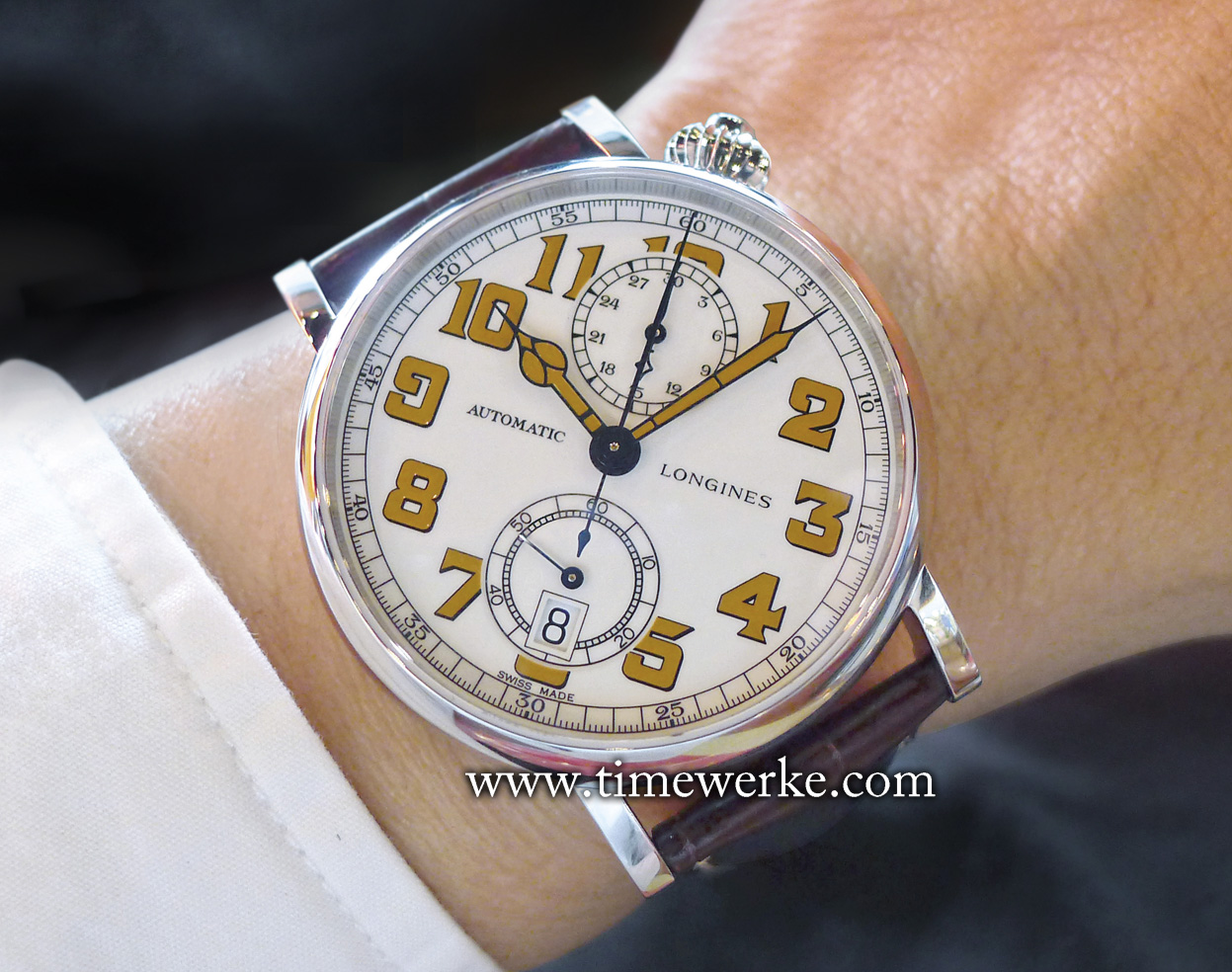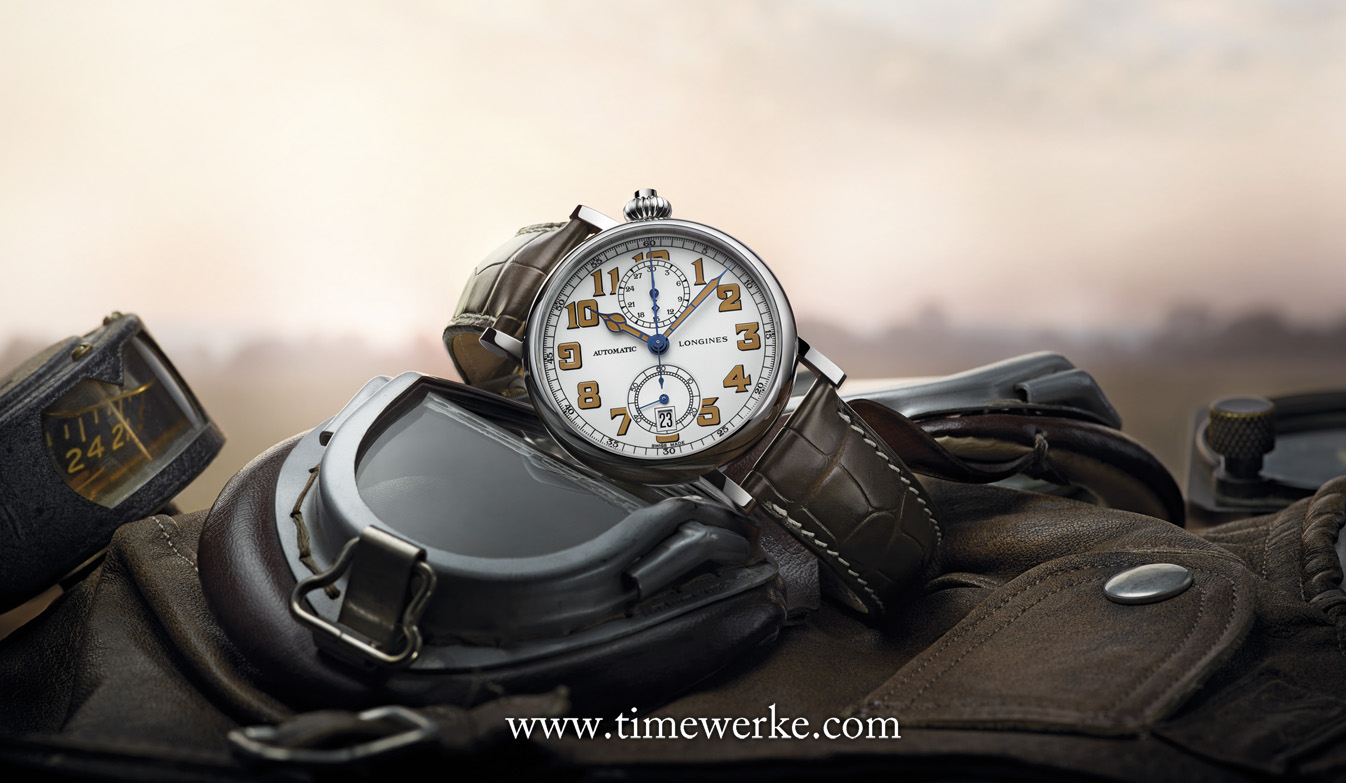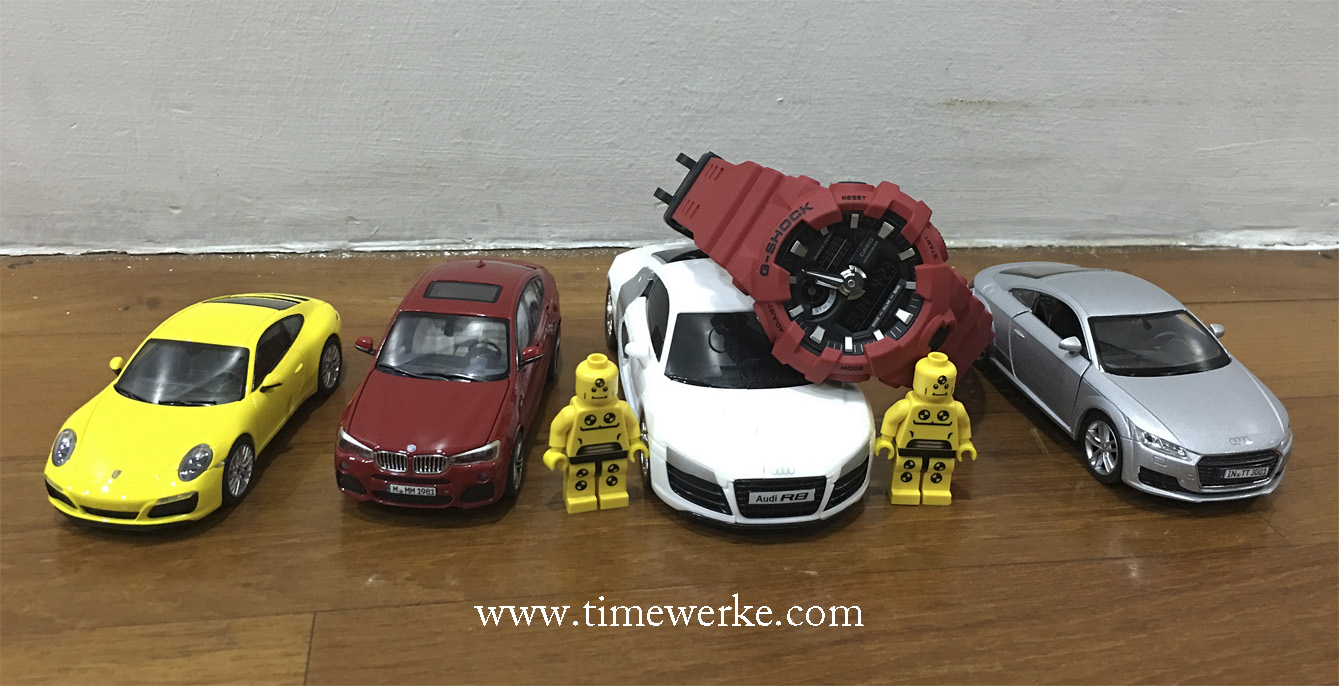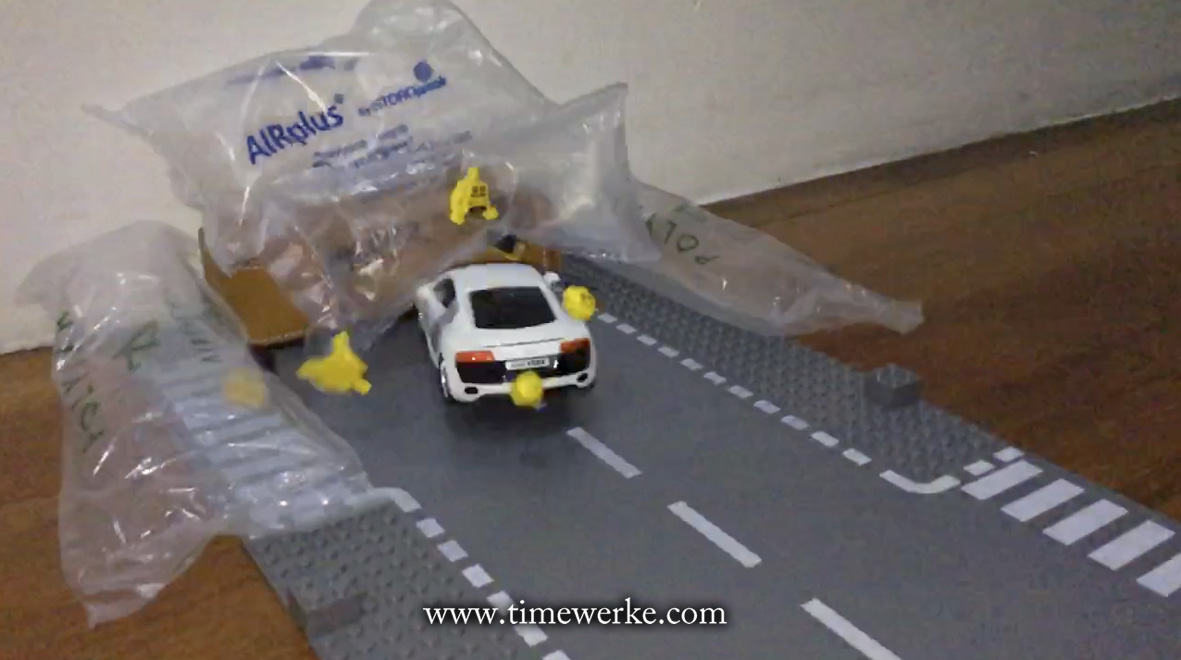
Longines Avigation Watch Type A-7 1935. Introduced in 2016, this single push-piece chronograph is a remake of the original that was produced in the 1930s. Recommended retail price: SGD5,170 (at the time of writing). Photo: © TANG Portfolio / TimeWerke. Elfa / Timmy.
Why is the Longines Avigation Watch Type A7 so-named? Why is the term “avigation” used? Is it a misspelling of the word navigation?
Well, it isn’t a typo or a misspelled word and it is understandable if you do not know what it means.
Perhaps those who were in the military, the US Air Corps of the US Army in particular, or Longines-Wittnauer during the 1930s, would be more familiar with the “avigation” term.
“Avigation” is actually an acronym invented by Longines-Wittnauer for its air navigation watches. It is derived from the words “Aviation” and “Navigation”, according to Michele Galizia in the book Military Wristwatches, adding that such watches were used by American Air Force navigators for astronomic navigation or “course determination through the stars”.
What is the story behind Longines-Wittnauer?
It is said that the A. Wittnauer Co became the exclusive sales agent for Longines in 1880, and this relationship lasted for 114 years till 1994. From what we understand, the distribution was thereafter taken back by the Swatch Group.
In 1936, the Wittnauer family sold the company and it was renamed Longines-Wittnauer. The Wittnauer company was acquired by Bulova in 2001, reportedly for US$11.6 million.
For the Longines Avigation Watch Type A-7 1935, a contemporary remake of such “avigation” watches and launched in 2016, the “1935” comes into the picture because such functional timekeepers were made during this time.
Such “avigation” watches were probably better known as the Type A-7 – a classification system for Air Force chronograph wristwatches.

In the past, such “avigation” watches were better known as the Type A-7 – a classification system for Air Force chronograph wristwatches. Photo: © Longines
Longines Avigation Watch Type A-7 1935
Introduced in 2016
Technical features:
• Calibre L788.2 (ETA A08.L11) automatic movement, 13¼-lignes
• 28,800 vibrations per hour
• 27 jewels
• 54-hour power reserve
• Single push-piece chronograph (integrated with the crown)
• Date display
• Sapphire crystal with several layers of anti-reflective treatment
• White lacquered polished dial, angled at 40-degrees to the right, 12 honey-coloured Arabic numerals
• Blued steel, honey-coloured varnish hour and minute hands, blued steel small seconds hand
• 41mm diameter case in stainless steel
• Water-resistant to 3 bar (30m)
• Brown alligator leather strap
Another Longines article that may be of interest is:
i. Understanding and Appreciating the Longines Aviation Watch Type A-7 1935


